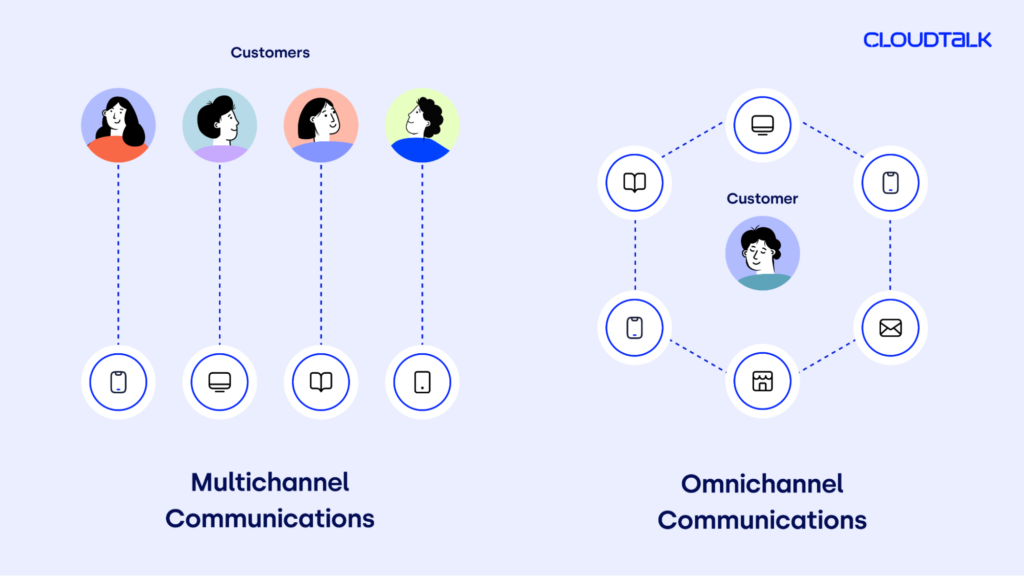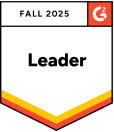The phone is the most-used channel for customer service¹. That’s why call centers play a key role for customers seeking assistance and answers.
Consequently, call centers help create your brand image and build customer loyalty. However, not all call centers are created equal. Each has its pros and cons and is best suited for different types of businesses and goals.
There are 8 types of call centers in total. To help you choose the best one, we’ve created this article outlining the details and key aspects of each.
Key Takeaways
- Customer service is a key competitive advantage. A well-structured call center not only delivers effective support but also fosters lasting customer relationships.
- There are eight types of call centers, each designed to meet specific business needs. Choosing the right one is essential to achieving the results your company requires.
- CloudTalk offers a comprehensive solution for all types of call centers, equipped with 100+ features, coverage in 160+ countries, and 100+ seamless integrations. Designed to meet diverse market demands, CloudTalk sets itself apart with its versatility and global reach.
Need Help Picking a Call Center Type? Chat with our experts to find your fit.
What is a Call Center?
First, we should get our definitions in order. Generally, a call center is a centralized department that handles inbound and outbound calls to and from customers. Unlike contact centers, which manage multiple contact channels, like email, SMS, and social media, call centers focus strictly on phone calls.
Call centers fulfill a variety of functions. Most importantly, they’re a lifeline between your business and your customers, serving as an extension of both the sales and customer service departments.
Consequently, call centers are integral in driving revenue, generating leads, answering customer questions, solving problems, and creating pleasant customer experiences. However, despite their importance, they often face operational and strategic challenges. Understanding and addressing common call center problems can significantly improve their efficiency and effectiveness.
We get it—there are lots of options out there. So, why CloudTalk?
The 8 Types of Call Centers
In the previous section, we defined a call center’s main goals and functions. But few call centers engage in all the activities mentioned above.
Each of the 8 types of call center services focuses on a different aspect, so your choice will depend on your company’s needs and expectations. Your options include the following:
#1 Inbound Call Center Goal: Support
As the name suggests, inbound call centers focus on incoming calls rather than contacting clients. Their tasks include answering questions, tech and customer support, inbound sales, order processing, loyalty programs, and dispatch. Inbound call centers have many powerful tools that help them achieve their goals, such as:
- Automatic Call Distribution (ACD): A system that automatically routes incoming calls to the most appropriate agent or department based on predefined rules.
- Skill-based Routing: Directs calls to agents with the specific skills needed to handle the inquiry efficiently, improving customer service.
- Interactive Voice Response (IVR): An automated system that allows callers to navigate menus and access information using voice commands or keypad inputs.
So, is an inbound call center right for you? If you sell products or services, then yes! Customers will always have questions or need help, and giving them a quick and efficient way of solving their issues is sure to win you their favor.
Every time your phone rings, it’s an opportunity. CloudTalk can turn it into a closed deal.
#2 Outbound Call Center
Outbound call centers specialize in taking the initiative and contacting your customers. This type of call center has multiple use cases, including telemarketing, phone surveys, lead building, market research, customer onboarding, and more.
Like their inbound counterpart, outbound call center systems use various tools to streamline their processes:
- Outbound IVRs: Automated voice systems that initiate calls to customers for reminders, surveys, or promotions without requiring a live agent.
- Click-to-Call: A feature that lets users initiate a phone call instantly by clicking a button on a website, app, or email.
- Call Tagging: The practice of labeling calls with specific tags or categories to track and organize interactions for better analysis.
- CRM Integration: It connects call center software with a Customer Relationship Management (CRM) system to provide agents with customer data and interaction history.
Should you implement an outbound call center? That depends on your target market, goals, and what sales/survey channels you use. The industries that most use this type of outbound call center include Software as a Service (SaaS), tourism, insurance and banking, telecommunication, and real estate.
#3 Blended Call Center
A blended call center combines inbound and outbound into one, covering everything from sales to support. That also includes using all of the tools we outlined in our previous two points.
So, the question is – who should you use a blended call center? The answer is anyone who can afford it and needs to make sales via phone calls, and wants to provide efficient support for their customers.
You can keep wasting calls, or you can make them count with our outbound sales solution.
#4 Virtual Call Center
Unlike the three types of call centers we described previously, virtual call centers don’t differ in their goals but rather in their organization. In the past, technical limitations demanded that call center technology be centralized in a single location, most commonly an office building.
This made expanding into foreign markets and covering off-hours prohibitively expensive. Today, that’s not the case at all.
Thanks to the development of internet technologies, you can now operate a decentralized virtual call center composed of professionals across various locations, languages, and time zones. All you need is a strong internet connection and good call center software like CloudTalk.
CloudTalk allows your agents to work remotely directly from their device of choice (smartphone, laptop, desktop) and still have access to all the information and features they need to do their best work. Thanks to that, you can easily onboard new employees and expand as you see fit at incredibly low prices.
So, who should use a virtual call center? In short, everybody who needs an inbound, outbound, or blended call center and enjoys the idea of saving money and raising efficiency!
#5 Automated Call Center
Automated call centers are entirely defined by their use of automation features within their processes. These tools make the lives of agents and customers easier and include appointment reminders, online scheduling, email management, holiday greetings, automatic SMS messages, and dealer/franchise locators.
In practical terms, this can create pre-recorded messages and add them to your IVR menu to allow callers to quickly access self-help guides, company terms and conditions, and more.
Who should use them? Like with Virtual Call Centers, anyone who values their and their employees’ time and resources. Fully automated call centers help save a lot of time, letting agents only focus on tasks that need the human eye and hand and leaving the rest to bots.
#6 Multichannel vs. Omnichannel Contact Centers
Multichannel and omnichannel contact center systems might seem like the same thing. Like virtual call centers, they can be inbound and outbound. Furthermore, they relate to facilitating customer conversations across multiple channels, including phone, SMS, email, and social media. However, there’s one crucial difference between the two.
While each channel in a multichannel contact center works in isolation, omnichannel contact centers unite everything in one place. This allows agents to easily follow up with customers on previous conversations, even if they took place in different channels.

But which one should you choose? That wholly depends on the number of your resources and whether you’re starting from scratch or not. Omnichannel contact centers are clearly superior to multichannel ones. However, transforming any type of contact center service into an omnichannel one requires a lot of time, effort, and money.
#7 In-house vs. Outsourced Call Centers
The difference between these two call centers should be obvious at first glance. You operate an in-house call center yourself, while with an outsourced call center, you pay someone else to do it.
The crux of the issue is how much control you want over your call center’s operations and how many resources (time, employees, effort) you’re willing to invest.
Building an in-house call center is more expensive to start with. Though it may get progressively cheaper, you’ll still need to worry about hiring and onboarding new employees, deploying tools, and evaluating operations.
Meanwhile, outsourced call centers, or BPO call centers (Business Process Outsourcing) as they’re sometimes called, don’t require you to worry too much about them outside of hiring an external organization. Still, you’ll have little oversight over their work, which might produce lower results.
Which one should you choose? Your decision will come down to how much money and manpower you’re willing to invest in producing the best results possible.
#8 Off-shore Call Center
Continuing from our last point, off-shore call centers are a type of outsourced call center, typically located in a part of the world where prices are lower, like India, Indonesia, the Philippines, etc.
Their benefit lies in their lower price, but they come with their own set of limitations. Off-shore call centers can sometimes cause language barriers between agents and customers, on top of suffering from the issues outlined with outsourced call centers.
Who are they right for? Off-shore call centers are perfect for small business owners with little money to spare. However, before employing one, you should consider whether their potential problems are worth the lower price.
What Type of Call Center Is Right For You?
Now that you know what each type of call center represents, it’s time to start looking for a solution that’s right for you. The good news? Whether you’re launching outreach campaigns, handling high call volumes, or managing a global team, we’ve got you covered.
CloudTalk is a cloud-based VoIP solution that allows you to send and receive calls with a single click, seamlessly integrate your CRM solutions into your call center app, and boost agent productivity with 100+ features.
Setup only takes a few minutes, and you can try it out for yourself completely free for 14 days—no credit card required.
Build the Perfect Call Center. Start your free trial and test every feature. No credit card needed.
Sources:

















